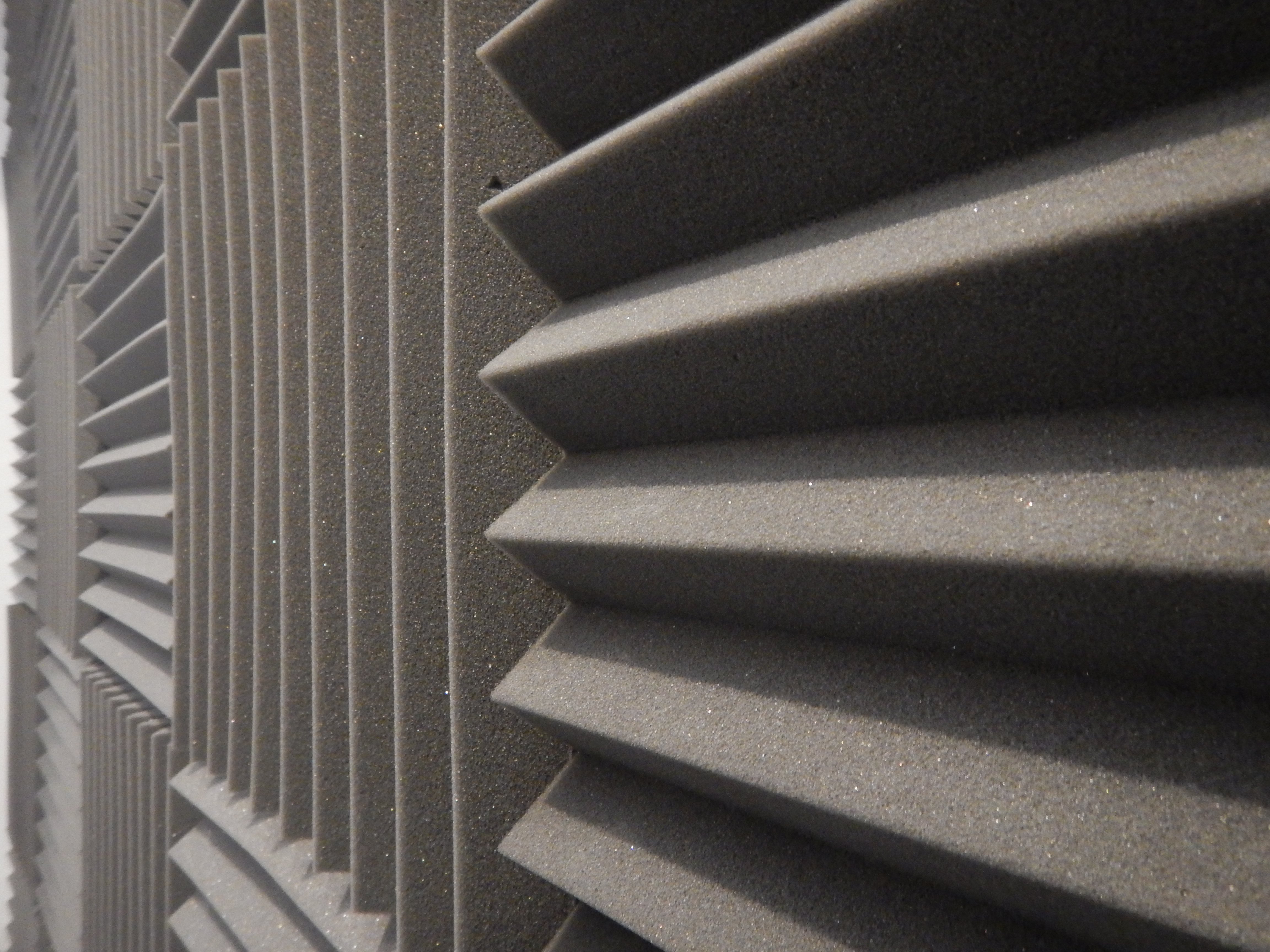Understanding STC & FSTC Ratings
Here at SoundAway, we're in the business of sound. More precisely, we deal with sound isolation and changing sound quality in specific spaces to best suit your needs. That space may be a large auditorium or concert hall where sounds need to be contoured to reach each individual section of the space or a small piano practice room where sounds need to be attenuated to a volume low enough so as not to disturb individuals practicing in adjacent areas.
Sound Vibrations
Sound vibrations decrease in volume as they travel through the air, as is demonstrated by yelling to someone standing a block away from you and someone else 10 feet away. The closer to the sound source, the louder it seems.
In addition to volume reduction caused by increased distance, you can also affect sound loudness by introducing a physical barrier to block the sound. This barrier could be a wall, a door, a window or some type of panel. Each of these barriers will have a different effect on the sound it’s blocking, depending on the sound-blocking ability.
Human sensitivity to changes in sound intensity levels is also worth considering. Measurement of sensitivity to differences in the rate of change of auditory signal parameters is complex and must take into account duration, extent of change, and velocity of the changing sound. Here is what you can typically expect:
1 dB / generally not perceptible
3 dB / just perceptible
5 dB / clearly noticeable
10 dB / twice as loud (or half as loud if it describes drop in sound level)
20 dB four times as loud
There are Two Measurement Units of Airborne Noise:
- Sound Transmission Class (STC) – associated with tests carried out within a controlled laboratory environment. Laboratory tests results are generally higher than those performed in the field.
- Field Transmission class (FSTC) – associated with tests carried out in the field. This allows for more of a real-life measurement that factors in things such as background noise levels, surface areas, environmental factors, etc.
Requirements of the National Building Code allow for a minimum acoustic rating of FSTC 50. At this level, the soundproofing is acceptable but you may still be able to hear a neighbor who snores loudly. FSTC 55 is a bit more comfortable and the desired acoustic comfort is around FSTC 60.
Classification / STC / FSTC
Minimum code / 50 / 45
Minimum quality / 55 / 50
Medium quality / 60 / 55
High quality / 65 / 60
STC Ratings
In the soundproofing industry, the ability of a barrier such as a wall or a door to reduce sound volume from one side of the barrier to the other is measured by a standard called STC, which stands for sound transmission class. This is a standard used primarily in the U.S. to rate partitions in a building as to their sound-attenuating capability. These partitions include interior and exterior walls, doors, windows, floors and ceilings. STC ratings provide you with an approximate idea of how much airborne sound a particular barrier such as an interior wall could stop. Simply stated, sound volume ratings in decibels (dB), measuring how loud a sound is, are recorded on both sides of the barrier being tested.
If the noise you're measuring is 90 dB, which is the volume of a typical police car siren, and the barrier decreases the sound to 70 dB on the other side of the barrier, you're said to have a 20 dB transmission loss. Note that if the test tone used in the above example is altered in pitch (frequency or Hz), the resulting transmission loss figure may be totally different.
STC ratings, introduced in 1961 as a means for comparing various types of barriers (wall, window, door, floor and ceiling assemblies), are often used to compare different products from competing manufacturers. STC is determined by taking transmission loss figures at 16 standard frequencies falling between 125 Hz and 4000 Hz. The results are plotted on a graph to form a curve, and this curve is compared with standard STC curves the industry has adopted.
STC Examples - Expected Field Results
45 / Normal voice not audible, raised voice plainly audible
50 / Loud voice understandable, raised voice not audible
55 / Shouting voice understandable, loud voice plainly audible
60 / Shouting playing audible, loud voice audible
65 / Shouting audible, loud voice not audible
70 / Very loud music understandable
75 / Very loud music plainly audible
80 / Very loud music audible
Note: The International Building Code requires a minimum of STC 50 for floors, ceilings and walls in new construction.
Shortcomings of STC Ratings
Typically, STC ratings numbers run between 27 and 72. The higher the number, the better the soundproofing capability of the barrier tested. It is important to note that STC Ratings are measured on a logarithmic scale: the values are not linear. Therefore, sound measuring at 50 decibels is not twice as loud as a 25-decibel sound. Here are some useful examples:
STC 27 – Single-pane window glass
STC 46 – 1/2” drywall glued to a 6” concrete block and painted on both sides
STC 72 – 8” painted concrete block wall with 1/2” drywall on both sides, installed on independent steel studs, with insulation in all cavities
One of the problems that exist with accurate STC ratings is that frequencies below 125 dB are not considered. Unfortunately, many sound-isolation problems come from noise sources that are below this 125 dB threshold. This includes most sounds emanating from home theaters; noise from heavy equipment, airplanes and trucks; musical instruments such as guitars, bass guitars, and drums; and certain industrial equipment. For this reason, it's a mistake to rely solely on STC ratings to determine sound isolation capabilities, especially where low-frequency sounds are involved.

